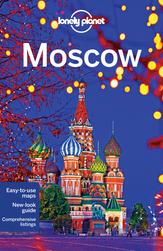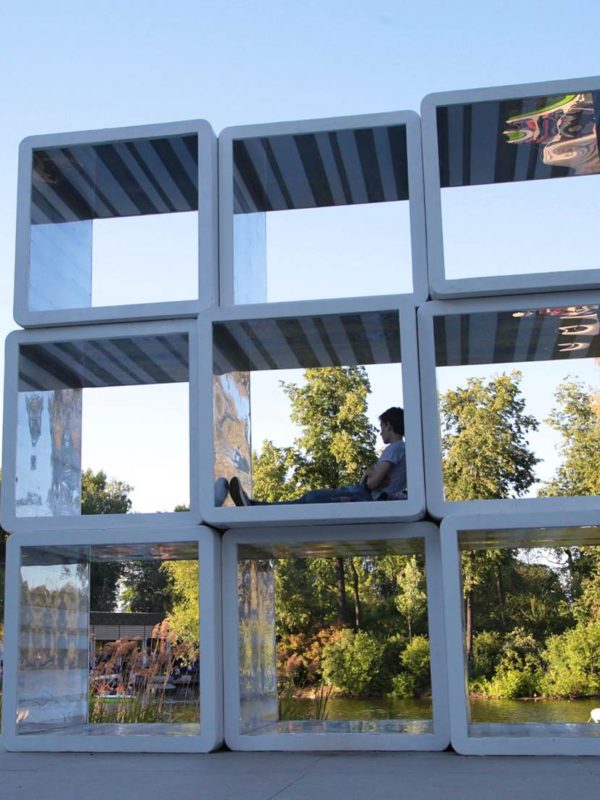In recent years, Moscow’s major urban parks have undergone a great transformation – these days they draw people of all ages and social groups, and some have become tourist attractions in their own right. Gone are the quiet spots for parents with their strollers and elderly people feeding the pigeons. Here’s our guide to Moscow’s vibrant green spaces and what they have to offer, from cycling, dance and yoga to art exhibitions and music festivals, exotic plants and wildlife and everything in between.
 Gorky Park, Moscow’s most famous green space © Kira Tverskaya / Lonely Planet
Gorky Park, Moscow’s most famous green space © Kira Tverskaya / Lonely Planet
Gorky Park
Moscow’s park revolution started with the famous Gorky Park. It was the first of the city parks to receive private investment, turning it into the number-one weekend spot for thousands of Muscovites. Full of lush green, artsy flowerbeds and thought-provoking sculptures, it was also the first to feature drinking fountains, never before seen in the city.
There are very few things you can’t do in Gorky Park. Rollerblading, skateboarding and cycling, beach volleyball, yoga and fitness classes, electric cars and boat rentals, parkour – you name it. All summer long, dancing sessions are held in the evenings on the specially equipped embankment. There’s an open-air movie theatre called Pioner, pop-up screens for special events, music festivals and futuristic playgrounds. The cutting-edge Garage Museum of Contemporary Art hosts temporary exhibitions.
Food for every taste is offered in cafes and restaurants throughout the park, while carts sell Soviet-style ice cream, hot corn and cotton candy. An observatory allows the visitors to take their date to explore the night sky, a small artificial beach welcomes sunbathers in the warm months, while during winter half of the park turns into an open-air skating rink. But the best time for visiting is from late spring to early autumn – keep in mind that it might get crowded on the weekends!
Vorobyovy Gory
Vorobyovy Gory (Sparrow Hills) is connected to Gorky Park by the Moscow river and its long embankment, meaning you can spend a relaxing day in the area walking both of the parks and enjoying what they have to offer. This nature reserve covers the hills below the grand Moscow State University; the observation deck on the top offers a beautiful view over half of the city. Not as well equipped as its neighbour, Vorobyovy Gory is a great retreat for those who want to enjoy some fresh air and listen to birdsong (there are bird-spotting routes throughout the park). You can do a little bit of hiking here, or try skating and cycling. When the snow covers the hills, the downhill skiing season starts, even though the main slope is neither high nor long.
 Opulent fountains and pavilions at the VDNKh © Kira Tverskaya / Lonely Planet
Opulent fountains and pavilions at the VDNKh © Kira Tverskaya / Lonely Planet
VDNKh
The VDNKh (aka the All-Russia Exhibition Centre) wasn’t, in fact, a park when it was conceived in 1935. This vast area hosted the first all-Soviet exhibition, showcasing the country’s agricultural achievements in pavilions dedicated to each of the Soviet republics. Now it’s a favorite among museum-hoppers, families, active young people and picky shoppers. It’s also a marvel of Soviet architecture; you can spend days here and never see all of it.
The museums and shopping pavilions sell traditional Russian crafts, foods and even plants, while old-style vending machines have typical Soviet lemonades. The complex includes a zip-line, an oceanarium, a contact zoo, a bonsai greenhouse and a horse-riding rink. In summer, look out for water-gun battles and flashmobs; in winter, there’s a gigantic, 20,000-sq-m ice rink. Check the website for details and curious walking tours.
The Botanichesky sad (Botanical Garden; gbsad.ru) connects to the VDNKh, if you’re up for a really long walk. It doesn’t offer that many activities but there are a few great picnic spots by the water, a beautiful rose garden and a great variety of trees, bushes, flowers and other plants from all over the world.
Aptekarsky Ogorod
Moscow State University’s Aptekarsky Ogorod (Apothecaries’ Garden) isn’t exactly a park, but more of a large fenced garden that became really popular in the last couple of years thanks to its active social media (check out their Instagram account) featuring stunning pictures of rare plants. Apart from the main outdoor area, there are greenhouses that envelop you in tropical heat even in winter. Many kinds of orchids, carnivorous greens, water lilies and lotus flowers, succulents and herbs can be found here. The garden often holds seasonal exhibitions and offers a variety of classes and tours – or you can just come to meet the resident ‘flower cats’.
 The colourful rooftops of the Kremlin in Izmaylovo © Elena Shchipkova / Getty Images
The colourful rooftops of the Kremlin in Izmaylovo © Elena Shchipkova / Getty Images
Izmaylovo
If you’d like to forget the city buzz for a while, Izmaylovo (izmailovsky-park.ru) is Moscow’s nearest recreational forest area. Apart from the large park smelling divinely of pine trees and fresh wood, there’s also a faux Kremlin in Izmaylovo – a colourful set of old-style buildings hosting the largest permanent Russian crafts market in the city. You can find anything your heart desires here: souvenirs, handmade and vintage items, including a whole flea market section with clothes, coins, manuscripts, WWII relics and more.
Sokolniki
Sokolniki took after Gorky Park and developed into a great outdoor retreat within the city limits. It covers a larger territory and makes you feel like you’re in a real forest, but with cycling paths and good infrastructure. It’s a family-oriented park offering lots of the same fun activities as the more central Gorky. Among the things that stand out are vibrant seasonal festivals, small amusement parks and an open-air swimming pool, while multiple ice-skating rinks, snow slides and an ice sculpture garden appear in winter.
 Festive atmosphere at the Kolomenskoe Museum-Reserve © Kira Tverskaya / Lonely Planet
Festive atmosphere at the Kolomenskoe Museum-Reserve © Kira Tverskaya / Lonely Planet
Kolomenskoe Museum-Reserve
If the VDNKh is a Soviet-era museum, the Kolomenskoe Museum-Reserve will show you the lifestyle of Russians from hundreds of years ago. It’s a huge nature reserve with ancient churches (the Ascension Church was built in the 16th century), old estates (like Tsar Alexey Mikhailovich’s favourite residence or Peter the Great’s little wooden hut) and museums. The architectural ensemble of the park is a classic example of traditional Russian style, which you won’t often see in the city.
The Voznesensky garden, located inside the park, is one of the oldest in Moscow (a couple of local oaks are over 400 years old); you can pick fruit from its apple trees during the harvest. There’s food and a range of activities available, including historical re-enactment festivals in the warmer months. While the museums and exhibitions charge entry fees, park admission is free (along with some ghost stories).
Losiny Ostrov
Losiny Ostrov (Elk Island; enelkisland.ucoz.ru) isn’t really an island – it’s actually a vast, pristine forest that makes drastic contrast with the city spreading outside its borders. It’s not easy to get here, nor is it so easy to navigate, but for the adventurous types the area provides a great full-day hiking trip (take food and water and make sure your phone is charged). The forest is home to all kinds of wildlife, but mostly small and harmless: lots of birds, and occasional elk or deer. An elk eco-station (you need to register on the website to visit) also gathers deer to feed in the winter. There’s also a number of horse ranches where you can practice your cowboy or cowgirl skills.
Get more travel inspiration, tips and exclusive offers sent straight to your inbox with our weekly newsletter.


